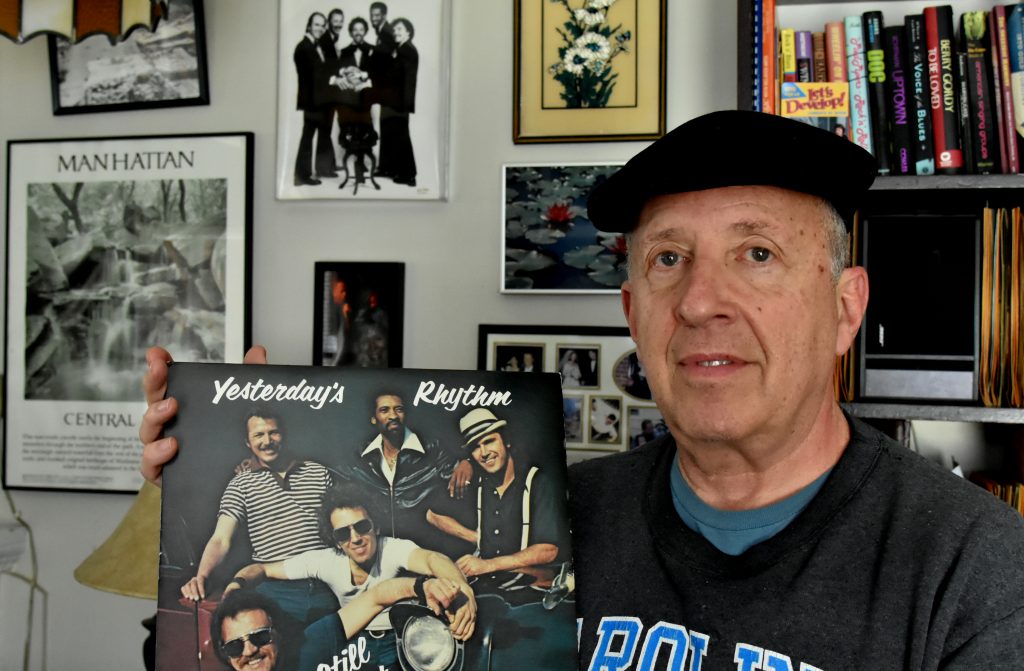
By Solomon Crenshaw Jr.
For the Birmingham Times

The Birmingham Black Radio Museum (BBRM) began as a project for Bob Friedman in 1992 to commemorate the first 50 years of a single radio station, 1400 WJLD-AM, and it grew to chronicle black radio in the Magic City.
After moving to Birmingham from his native New York City, N.Y., in 1987, Friedman worked at WJLD, where he started a 1950s vocal-group harmony show in April 1989 and later began a Saturday morning talk show, “Sound Off.” About two and a half years into his 22-year tenure at WJLD, he asked to produce a retrospective about the station’s first half century.
“I put together a pamphlet [about the station] and got people to buy ad space in it,” he recalled. “I also had a Saturday morning show, so I could promote it.”
Friedman, BBRM Founder and Director, recorded interviews with on-air personalities, including Ed “Johnny Jive” McClure, Jesse Champion Sr., and Lewis White.
“I started learning about this unbelievable history of black radio in Birmingham,” Friedman said. “And that sent me on a track, so that even though I left WJLD in 2011, I had already incorporated the BBRM.”
The museum, largely based online at www.bbrm.org, tells of stations that include WJLD, WENN, WAGG, WSGN, and Bessemer’s WBCO. Personalities include but are not limited to legends Dr. Shelley Stewart, Paul “Tall Paul” White, Willie McKinstry, the Rev. Dr. Erskine Faush, and Roy Wood Sr. The physical home is inside the Alabama Jazz Hall of Fame in the Carver Theater, which is currently closed for repairs.
Wood is remembered for his nationally syndicated “One Black Man’s Opinion.” Locally, longtime residents of the Birmingham area remember Faush’s “Sick Call” during his gospel show and White’s signature signoff—“Life is hard by the yard but a cinch by the inch.”
WENN was the city’s premier black radio station during the Civil Rights Movement, and, according to Diane McWhorter’s Pulitzer Prize-winning book on the movement, “Carry Me Home,” Dr. Stewart and White were among the station’s deejays who gave students coded signals to march. For example, Stewart told students on May 2, 1963—“D-Day”—across the airwaves: “Kids, there’s gonna be a party at the park. Bring your toothbrushes because lunch will be served,” McWhorter wrote. The toothbrushes, of course, were for jail hygiene.
Friedman said, “Maurice ‘Thin Man’ King, also a WENN announcer, is also referenced by some as active in that movement, particularly with the high school students.”
On the Road
Beyond the digital display online, Friedman takes his message of Birmingham black radio on the road. He is set to speak at Alabama Agricultural and Mechanical University on February 28 and at Auburn University on March 24. During his time on The Plains, he’ll record a segment on “The Hepcat Show—Golden Oldies” on 91.1 WEGL-FM.
Friedman said he had recruited a board for his new venture and received some funding to get proper archival material.
“That began the trek to do oral history and then to collect ephemera, [printed matter used by collectors, such as programs, posters, guidebooks, etc.],” he said. “Now we’re a ceremonial partner with the Radio Preservation Task Force.
On the BBRM website, Friedman said the first interviews included mention of other announcers, earlier announcers, earlier stations stretching back to the 1950s, the ’40s and ’30s. Artifacts were donated to the BBRM throughout the 1990s. By 2007, the website reads, BBRM had contacted historians from the University of Alabama at Birmingham (UAB) and the University of Alabama (UA), as well as the Alabama Archives in Montgomery. A partnership began with Dr. Danny Wallace from UA’s School of Library and Information Studies.
A Rich Record
That partnership continued with UA’s Dr. Robert Riter, as well as with UAB history professor Pam King. Riter said the importance of black radio in Birmingham comes in its ability to support and sustain community significance, which
“in itself merits documentation and being preserved as an expression of community memory and all facets of community,” Riter said, noting politics, music, day-to-day life, business, and commerce. “It’s really a rich record, documenting the lived experiences of individuals.
“I think what the BBRM does is quite interesting, with the emphasis on oral history, recording stories and narratives that might not have been captured by others,” he said.
While Dr. Stewart is included in the museum, he is not a fan of the BBRM. The recent inductee to the Atlanta, Ga., chapter of the National Black Radio Hall of Fame said separate entities for cities like Birmingham is divisive.
“It was about all of us together,” said Dr. Stewart, who became a prominent advertising agency owner.
Ron January, operations manager at myV94.9 (WATV-FM), disagreed, saying that the museum is needed in the “preservation of our history.”
“You’ve got a lot of states that have their history as far as black radio is concerned,” January said. “Here in Alabama, we’ve sort of been behind on that. It’s time for it. No doubt about that. All the announcers that have been there for those years and nobody even knows who they are.
“It’s like they say: ‘You don’t know where you’re going if you don’t know where you’ve been.’”
Click one of the links below to read more stories about blacks in radio.




